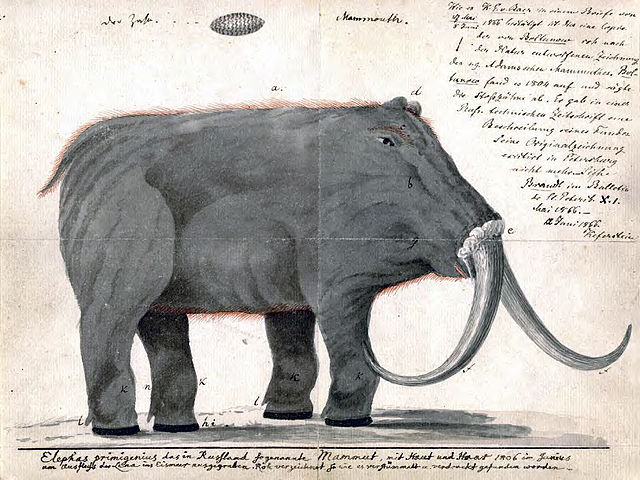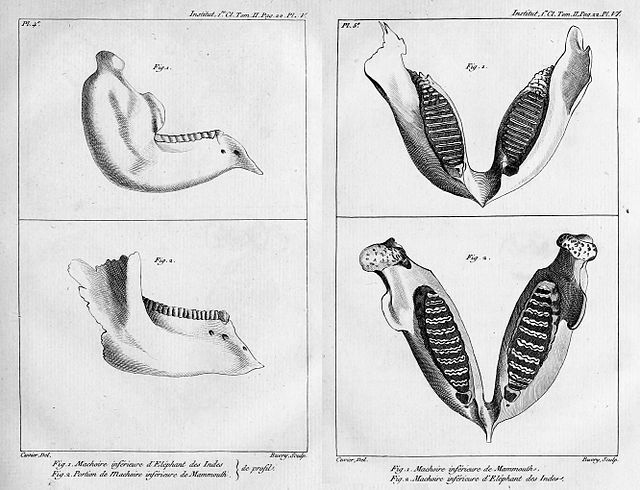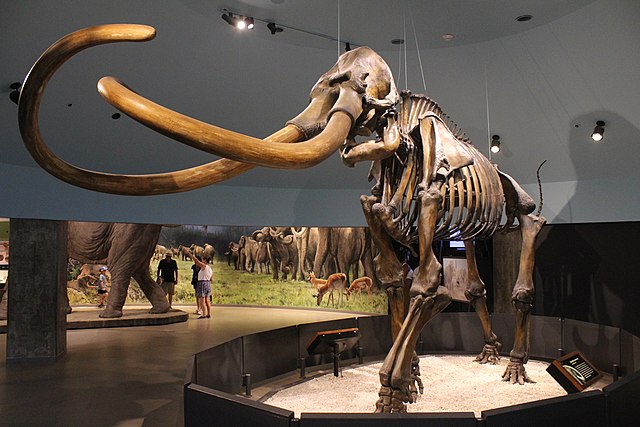The woolly mammoth is an extinct species of mammoth that lived from the Middle Pleistocene until its extinction in the Holocene epoch. It was one of the last in a line of mammoth species, beginning with the African Mammuthus subplanifrons in the early Pliocene. The woolly mammoth began to diverge from the steppe mammoth about 800,000 years ago in Siberia. Its closest extant relative is the Asian elephant. The Columbian mammoth lived alongside the woolly mammoth in North America, and DNA studies show that the two hybridised with each other.
Woolly mammoth
Copy of an interpretation of the "Adams mammoth" carcass from around 1800, with Johann Friedrich Blumenbach's handwriting
1930s illustration of the lectotype molars; the left one is now lost.
Georges Cuvier's 1796 comparison between the mandible of a woolly mammoth (bottom left and top right) and an Indian elephant (top left and bottom right)
A mammoth is any species of the extinct elephantid genus Mammuthus. They lived from the late Miocene epoch into the Holocene about 4,000 years ago, and various species existed in Africa, Europe, Asia, and North America. Mammoths are distinguished from living elephants by their spirally twisted tusks and in at least some later species, the development of numerous adaptions to living in cold environments, including a thick layer of fur.
Mammoth
Molar of the primitive mammoth Mammuthus meridionalis
Molar of a woolly mammoth
Life restoration of a woolly mammoth at Royal BC Museum








